1. Shared Micro-Farms
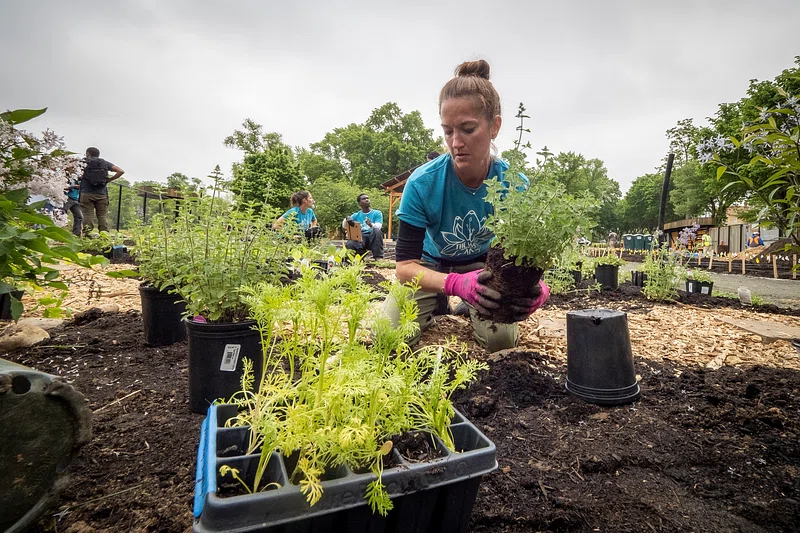
Shared micro-farms are becoming an increasingly popular feature in residential communities, offering residents the chance to grow their own produce in a communal setting. These spaces encourage sustainable living by providing fresh, organic fruits and vegetables while reducing the carbon footprint associated with transporting food. Residents share responsibilities such as planting, watering, and harvesting, fostering a sense of community and collaboration. Shared micro-farms can transform underutilized spaces, such as vacant lots or rooftops, into thriving green spaces that enhance the neighborhood’s aesthetic.
In addition to producing food, they serve as educational hubs, teaching participants about urban agriculture, composting, and sustainable practices. These farms often incorporate eco-friendly features, like rainwater collection systems and solar-powered tools, making them a model for green living. According to the National Sustainable Agriculture Coalition, initiatives like these are crucial for addressing food insecurity and promoting environmental resilience. Many urban planners are incorporating micro-farms into “agrihoods,” residential developments designed around farming communities. While challenges such as maintenance costs and zoning regulations exist, the benefits of shared micro-farms far outweigh the drawbacks.
2. Pet-Only Parks

Pet-only parks are revolutionizing the way communities cater to their animal residents by creating dedicated spaces for pets to exercise, socialize, and play. These parks often feature amenities such as agility courses, shaded rest areas, and water fountains designed specifically for animals. By providing a safe and controlled environment, they allow pets to run freely without the constraints of leashes, which is essential for their physical and mental well-being. These spaces also serve as social hubs for pet owners, fostering connections among neighbors and encouraging a sense of community. However, some critics argue that the allocation of public land for pet-only parks can be contentious, especially in urban areas with limited green spaces.
Advocates counter that these parks help reduce conflicts in shared spaces, such as playgrounds or walking trails, by providing pets with a designated area. According to the American Kennel Club, well-maintained dog parks can even decrease behavioral issues in dogs by providing regular socialization opportunities. The rise of innovative pet parks, such as those incorporating pet-friendly cafes or grooming stations, demonstrates their growing popularity. Despite challenges, these parks highlight the evolving relationship between humans and their pets in urban settings.
3. Color-Coded Streets
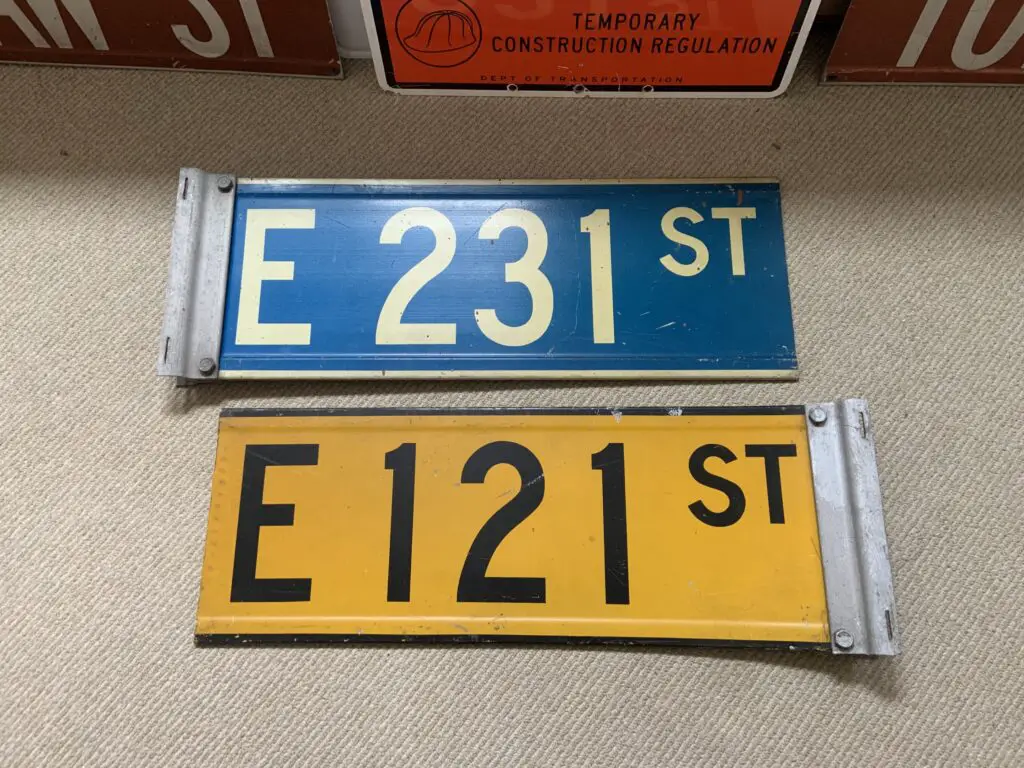
Color-coded streets are an innovative urban design concept that uses vibrant colors to communicate specific functions, themes, or safety information. For example, some cities paint bike lanes bright green to distinguish them from vehicle lanes, enhancing visibility and reducing accidents. This approach improves navigation for residents and visitors alike, helping them quickly identify pedestrian zones, cycling paths, or eco-friendly areas. Beyond functionality, these streets can add a dynamic visual element to neighborhoods, fostering a sense of identity and community pride.
Critics argue that excessive use of colors might detract from the natural beauty of urban spaces or confuse visitors unfamiliar with the system. Thoughtful urban design, including color-coded streets, can significantly enhance city livability. In addition to safety, these initiatives often align with sustainability goals, encouraging walking, cycling, and other low-carbon transportation methods. Maintenance is an ongoing concern, as the vibrant colors require regular upkeep to remain effective.
4. Mailroom Cafés
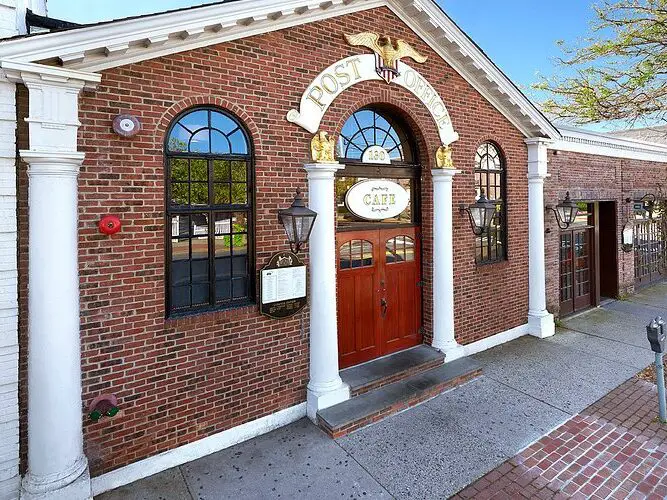
Mailroom cafés are a creative solution to the growing demand for convenient package retrieval in residential communities. These hybrid spaces combine traditional mailrooms with coffee shops or lounges, providing residents with a comfortable environment to pick up packages and socialize. By reimagining mailrooms as community hubs, developers aim to foster a sense of connection among neighbors while addressing the challenges of increased online shopping. Amenities often include free Wi-Fi, cozy seating, and refreshments, making these spaces inviting and functional.
According to Urban Land Institute, places that blend food and real estate, like mailroom cafés, represent a broader trend of “third spaces” designed to enhance the quality of urban living. These spaces encourage spontaneous interactions, helping residents build stronger relationships in an increasingly digital world. Security measures, such as lockers and package tracking systems, ensure that parcels are kept safe and accessible. However, some critics question the additional costs associated with maintaining such facilities, which may be passed on to residents. Despite this, the appeal of combining convenience with community makes mailroom cafés a compelling feature in modern developments.
5. Pop-Up Amenities
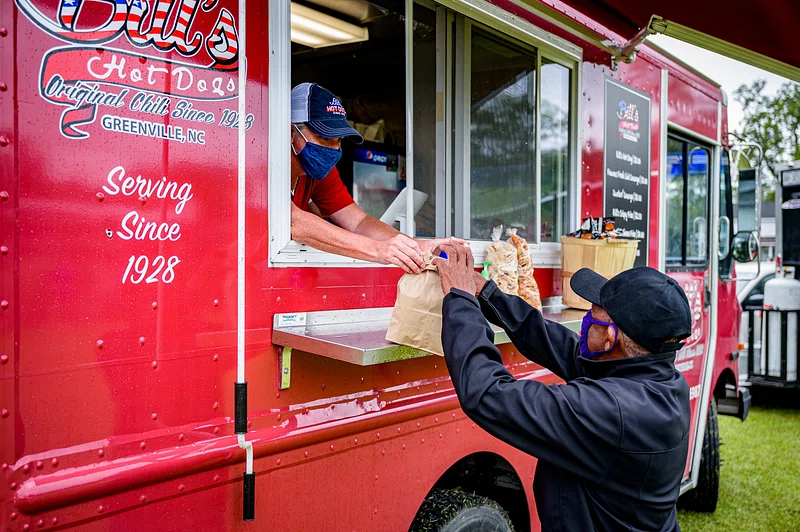
Pop-up amenities are redefining the way communities experience recreation and culture by offering temporary, versatile installations. From mobile gyms and food trucks to pop-up cinemas and art galleries, these amenities provide dynamic and engaging experiences for residents. Their temporary nature allows neighborhoods to test different services before committing to permanent installations, ensuring they meet the community’s needs. Pop-ups also add an element of surprise and excitement, encouraging residents to explore and participate in activities they might not otherwise try.
According to sites like Glossy, pop-up initiatives can revitalize neighborhoods by attracting visitors and boosting local economies. However, they require careful planning to address logistical challenges, such as permits, accessibility, and potential disruptions. The adaptability of pop-up amenities makes them particularly valuable in urban areas with limited space or rapidly changing demographics. As cities continue to evolve, the flexibility of pop-ups ensures that communities can remain vibrant and responsive to residents’ needs.
6. Interactive Street Art
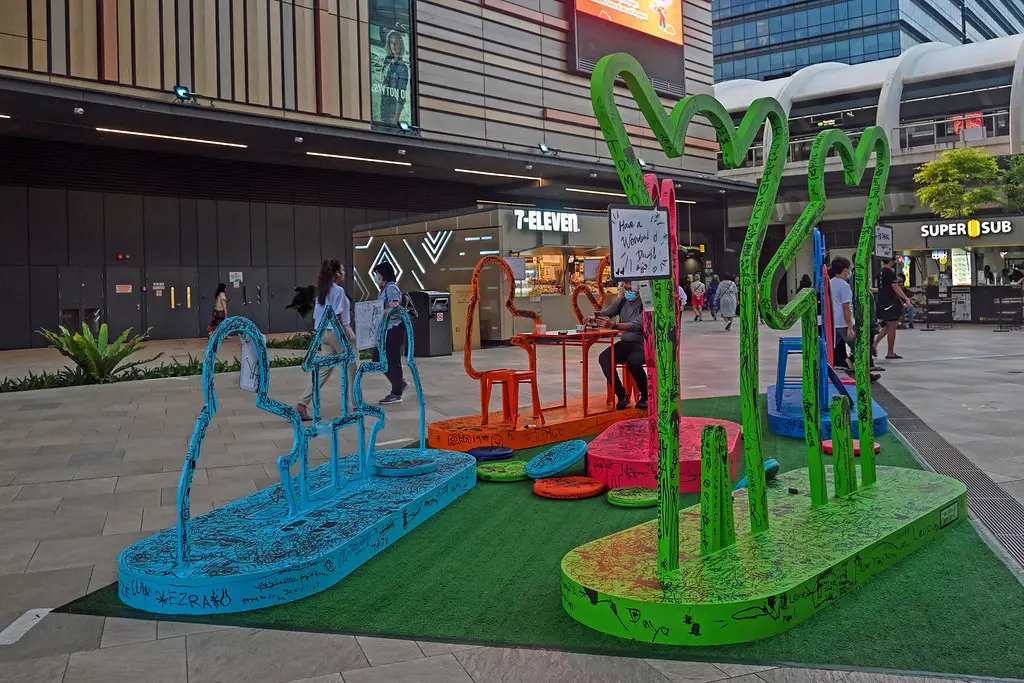
Interactive street art transforms public spaces into vibrant, engaging experiences by incorporating elements such as touch, motion, and augmented reality. Unlike traditional murals, these installations invite viewers to actively participate, creating a sense of connection and community. Cities around the world are embracing this trend, using interactive art to beautify neighborhoods, celebrate local culture, and attract tourism. According to Smithsonian Magazine, public art has a profound impact on civic pride and cultural engagement. Examples include murals that respond to sound, 3D chalk art that creates immersive illusions, and augmented reality installations that come to life through smartphone apps.
These projects often serve as platforms for local artists, providing opportunities to showcase their creativity while engaging diverse audiences. Interactive art also promotes accessibility by breaking down barriers between art and the public, making cultural experiences more inclusive. However, maintaining these installations can be challenging, as they often require specialized upkeep to remain functional. Despite these challenges, the rise of interactive street art demonstrates its potential to transform urban spaces into dynamic cultural hubs.
7. Car-Free Zones
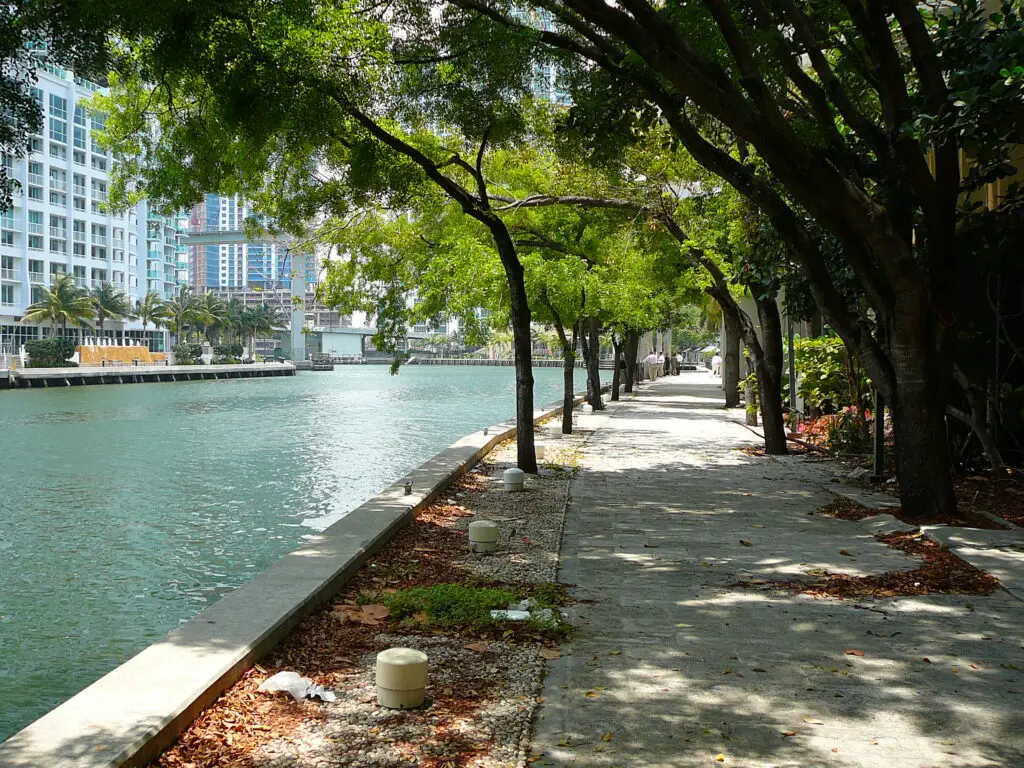
Car-free zones are increasingly being implemented in suburban neighborhoods, not just city centers, as a way to prioritize pedestrian safety and environmental sustainability. These zones often feature bike paths, walking trails, and electric shuttles to reduce reliance on traditional vehicles and minimize pollution. Popular in cities like Oslo and Barcelona, car-free areas aim to promote healthier, more active lifestyles and create safer environments for families.
According to Momentum Mag, such initiatives can significantly reduce greenhouse gas emissions and improve air quality, particularly in dense urban areas. However, these zones require careful planning to ensure accessibility for individuals with disabilities or those who rely on vehicles for daily tasks. Critics often point out the inconvenience for commuters and the potential economic impact on businesses that depend on car traffic. Still, many urban planners see car-free zones as a necessary step toward greener, more sustainable cities. Pilot programs in suburban neighborhoods are helping communities test the feasibility of these changes before full implementation.
8. Neighborhood Podcasts

Neighborhood associations are embracing podcasts as a modern way to keep residents informed and connected. These hyper-local podcasts feature updates on community events, local news, and even personal stories from neighbors, making them a charming addition to digital engagement strategies. Often produced by volunteers, the content may include interviews with local leaders, highlights of upcoming activities, and discussions on pressing neighborhood concerns.
According to Podcast Insights, podcasts have become a powerful medium for community storytelling and outreach due to their accessibility and affordability. However, challenges can arise when the content becomes overly personal or biased, potentially sparking controversies among residents. Despite these pitfalls, neighborhood podcasts can foster a sense of belonging and community pride. They also provide an opportunity for local businesses and services to advertise directly to a targeted audience. Communities looking to implement podcasts often pair them with social media campaigns to maximize reach.
9. Glow-in-the-Dark Pathways

Glow-in-the-dark pathways are an innovative way to enhance neighborhood safety and aesthetics while reducing energy consumption. Made from luminescent materials that absorb sunlight during the day, these pathways emit a soft glow at night, eliminating the need for extensive streetlight installations. Cities like Eindhoven in the Netherlands have pioneered these pathways, integrating them into parks and residential areas.
According to National Geographic, such pathways not only improve nighttime visibility but also contribute to eco-friendly urban development. They are particularly useful for walking and biking trails, encouraging outdoor activity even after sunset. However, their implementation can be costly, and their durability may be tested in regions with extreme weather conditions. Critics also raise concerns about the potential for uneven light distribution or fading over time. Despite these challenges, glow-in-the-dark pathways are gaining popularity as a sustainable alternative to traditional lighting.
10. Silent Social Hours
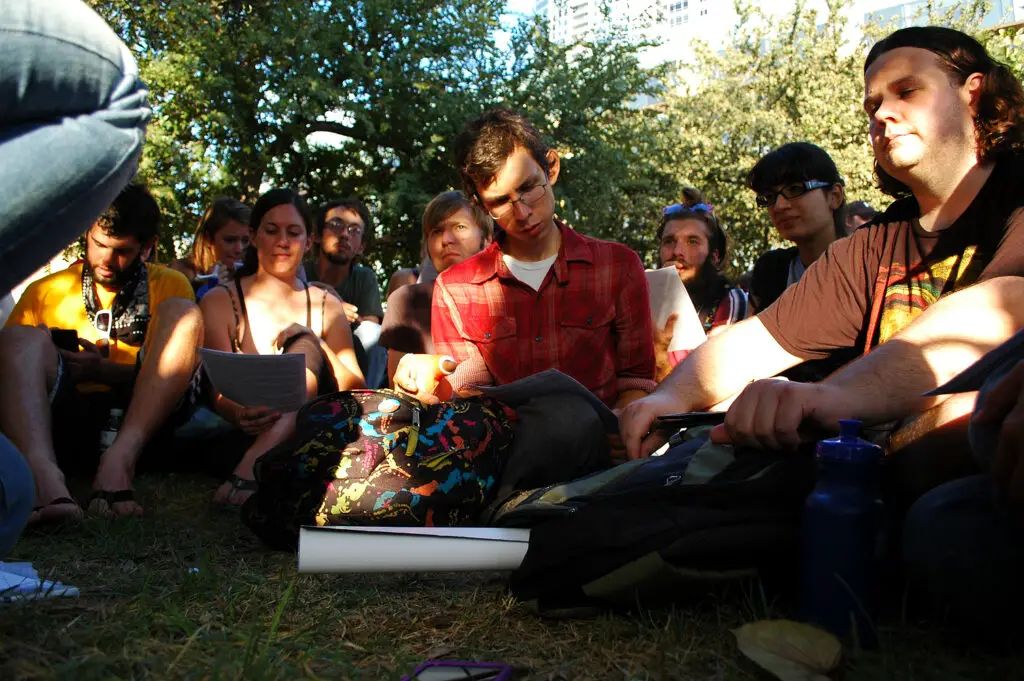
Silent social hours are emerging as a unique way for communities to connect while embracing tranquility. Inspired by wellness retreats, these events encourage residents to gather in shared spaces for quiet activities like reading, meditating, or simply enjoying the presence of others without speaking. The concept appeals to those seeking relaxation and mindfulness in an increasingly noisy world.
According to the American Psychological Association, quiet time can significantly reduce stress and improve mental clarity, making it a valuable addition to community programming. However, silent social hours may feel awkward or exclusionary to individuals who thrive on lively interactions and conversations. Organizers often provide guidelines to ensure that participants respect the intended silence and create an atmosphere of calm. These events are typically held in common areas such as parks or community centers and may include yoga mats, cozy seating, and even soft background music. While not for everyone, silent social hours are gaining popularity among wellness-focused communities.
11. Shared Tool Libraries
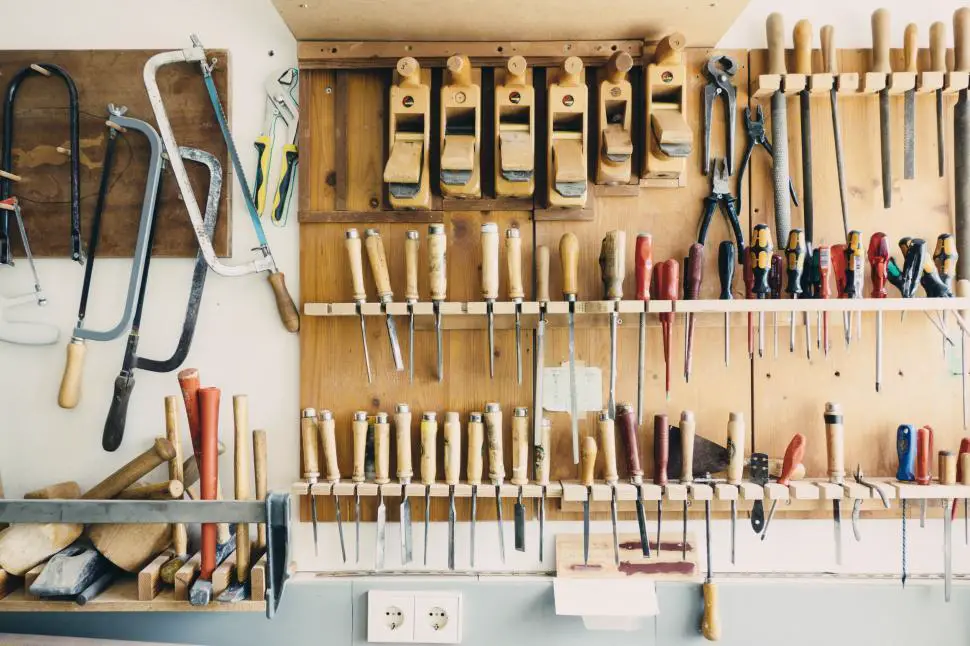
Shared tool libraries are an excellent way for neighborhoods to reduce waste and foster collaboration by providing communal access to rarely used tools. These libraries are stocked with items such as drills, saws, gardening equipment, and even specialty tools for home improvement projects. By pooling resources, residents save money and avoid the need to purchase tools they might only use a few times.
Shared tool libraries are also an effective way to build community connections and promote sustainability. They reduce the demand for manufacturing new tools, which in turn helps conserve natural resources and lower carbon emissions. Clear guidelines for borrowing and returning tools are essential to avoid disputes over maintenance or loss of items. Many libraries operate on a membership basis, with small fees helping to fund upkeep and expansion. The concept is especially popular in urban areas where storage space is limited.
12. Transparent Fences

Transparent fences are replacing traditional privacy barriers with sleek, modern designs that foster openness and connection among neighbors. Made from materials like glass panels or wire grids adorned with climbing plants, these fences create a sense of shared space while maintaining some level of boundary. Transparent fences are particularly popular in densely populated areas where traditional barriers can feel isolating.
These fences also allow for better airflow and natural light, making yards feel more spacious and inviting. However, the trend isn’t for everyone, as it sacrifices a degree of privacy that some homeowners value. Maintenance can also be a concern, especially for glass panels prone to smudging or wire grids that require regular plant care. Despite these drawbacks, transparent fences are celebrated for their modern aesthetic and their ability to blend seamlessly into landscaped environments.
